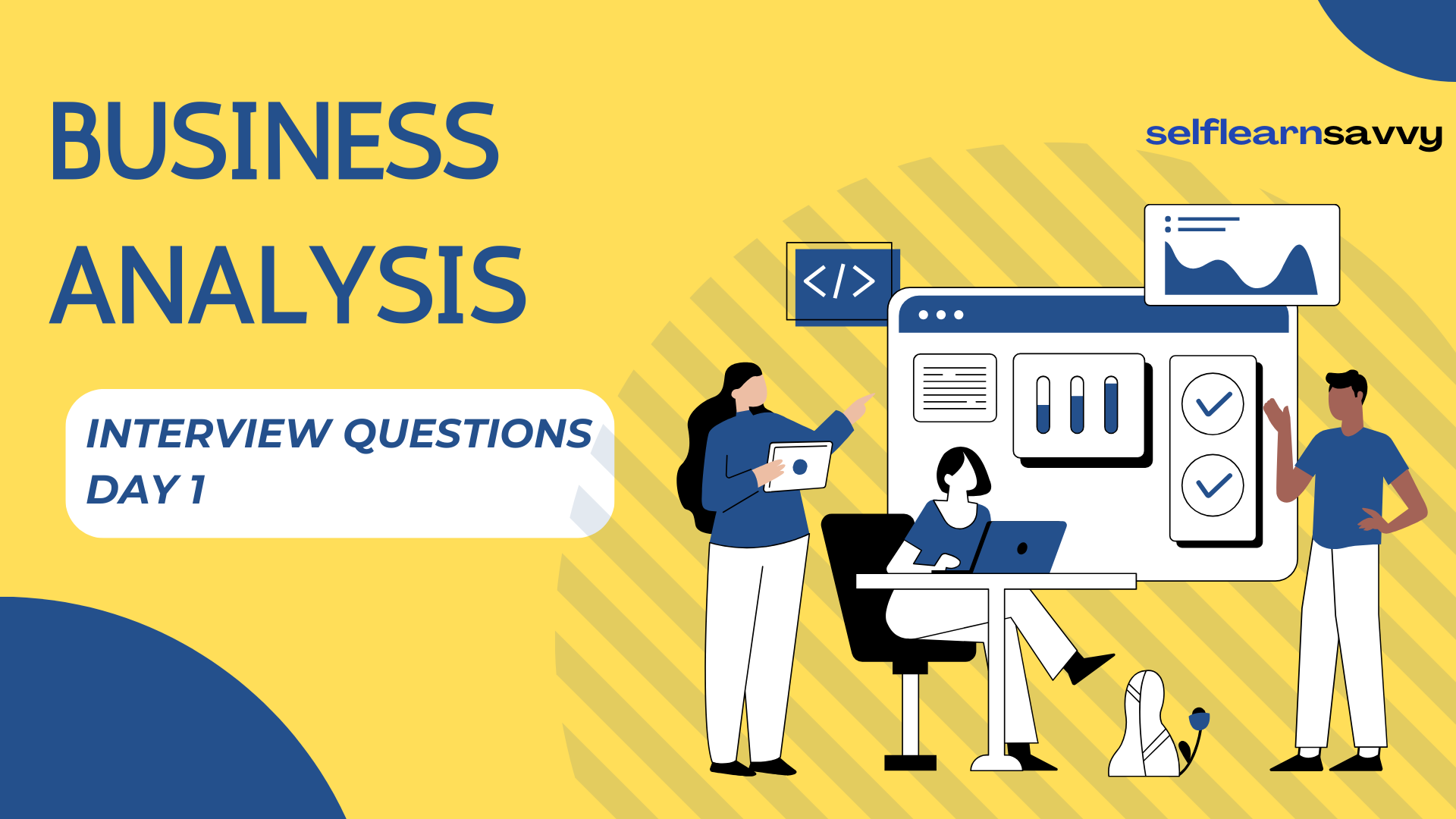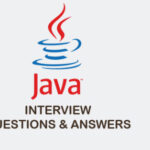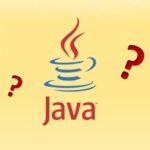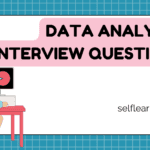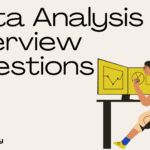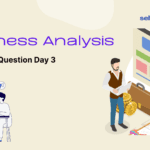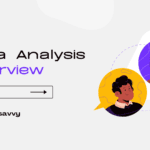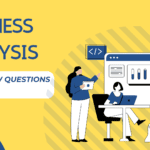Mastering Your Business Analyst Interview – Day 1
Welcome to Day 1 of our Business Analyst interview preparation series! Landing your first job as a Business Analyst can be challenging, but with the right guidance, you’ll be ready to tackle any interview. In this blog post, we’ll cover 15 fundamental Business Analyst interview questions along with detailed answers to help you ace your interview and kickstart your career in Business.
What is Business Intelligence (BI), and why is it important?
Answer: Business Intelligence (BI) involves the use of data analysis tools and techniques to extract valuable insights from raw data, helping organizations make informed decisions and gain a competitive edge in the market.
What are the key components of a Business system?
Answer: A BI system consists of data sources, ETL (Extract, Transform, Load) processes, a data warehouse or data mart, BI tools for analysis and reporting, and a user interface for accessing insights.
Can you explain OLTP and OLAP?
Answer: OLTP (Online Transaction Processing) handles real-time transactional data processing, while OLAP (Online Analytical Processing) is used for complex multidimensional analysis of historical data to support decision-making.
What role does ETL play in Business Analyst ?
Answer: ETL (Extract, Transform, Load) is crucial in Business Analyst for extracting data from various sources, transforming it into a consistent format, and loading it into a data warehouse for analysis.
How do you handle missing data in Business Analyst projects?
Answer: Handling missing data involves techniques like imputation, where missing values are estimated based on existing data patterns, or exclusion, where incomplete records are removed from analysis.
Explain the difference between a dashboard and a report in Business Analyst ?
Answer: A dashboard provides visual representations of key performance indicators (KPIs) and metrics in real-time, while a report presents structured data in tabular or graphical formats for analysis.
What are some common data visualization techniques used in Business Analyst ?
Answer: Common data visualization techniques include bar charts, line graphs, pie charts, scatter plots, heatmaps, and geographical maps, among others.
What is a dimension table and a fact table in a data warehouse?
Answer: A dimension table contains descriptive attributes about business entities, while a fact table contains quantitative data (facts) related to business transactions.
What is a star schema and a snowflake schema?
Answer: A star schema is a simple data warehouse schema where one or more dimension tables are connected to a central fact table. A snowflake schema is a more normalized version of the star schema, with dimension tables further normalized into sub-dimensions.
How do you ensure data quality in a Business Analyst project?
Answer: Data quality assurance involves processes like data cleansing, data validation, and data profiling to ensure accuracy, completeness, consistency, and reliability of data.
What are some popular BI tools in the market?
Answer: Popular BI tools include Tableau, Power BI, QlikView, MicroStrategy, SAP BusinessObjects, and IBM Cognos, among others.
What is the difference between a calculated field and a measure in BI reporting?
Answer: A calculated field is a custom field derived from existing data using mathematical or logical operations, while a measure is a numerical value that can be aggregated (sum, average, count) for analysis.
How do you handle large volumes of data in BI analysis?
Answer: Handling large volumes of data involves techniques like data partitioning, data indexing, data compression, and implementing distributed processing using technologies like Hadoop or Spark.
Explain the concept of data mining in Business Analyst ?
Answer: Data mining involves the discovery of patterns, trends, and insights from large datasets using statistical algorithms, machine learning techniques, and artificial intelligence.
What is the importance of data governance in Business Analyst ?
Answer: Data governance ensures the availability, usability, integrity, and security of data assets across the organization, providing a framework for effective data management and compliance.
Conclusion:
Congratulations on completing Day 1 of our Business Analyst Analyst interview preparation series! By mastering these fundamental concepts and questions, you’re well-equipped to tackle any Business Analyst interview with confidence. Stay tuned for Day 2, where we’ll delve deeper into advanced BI topics and interview questions. Happy learning!
